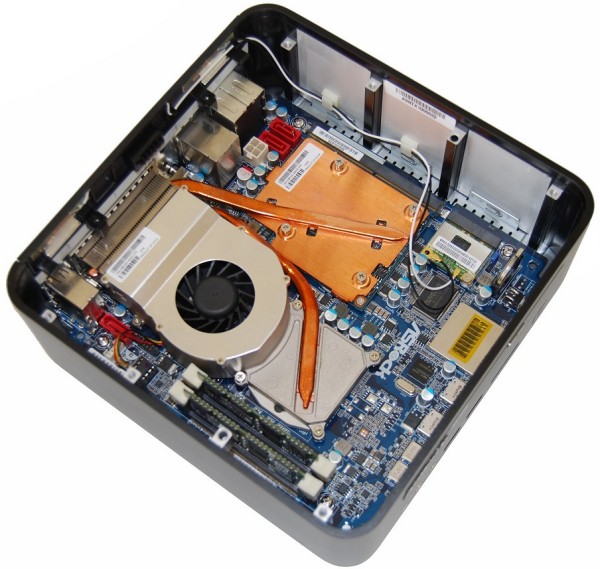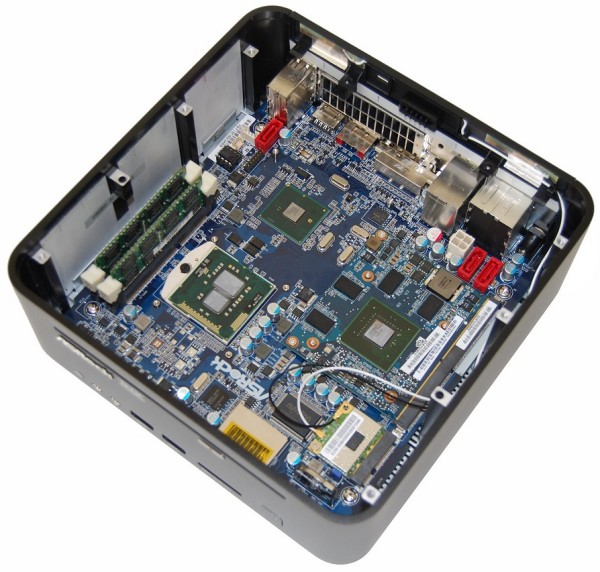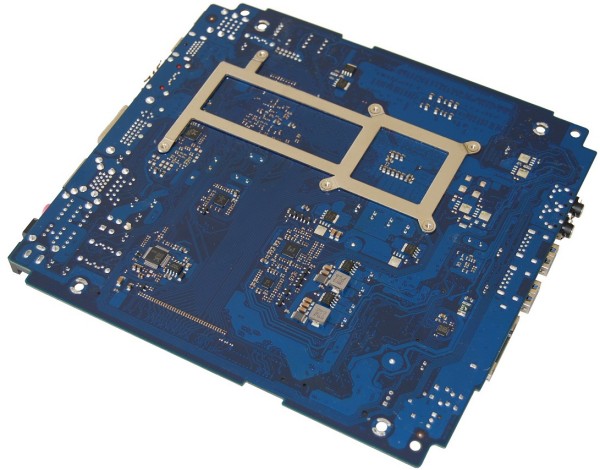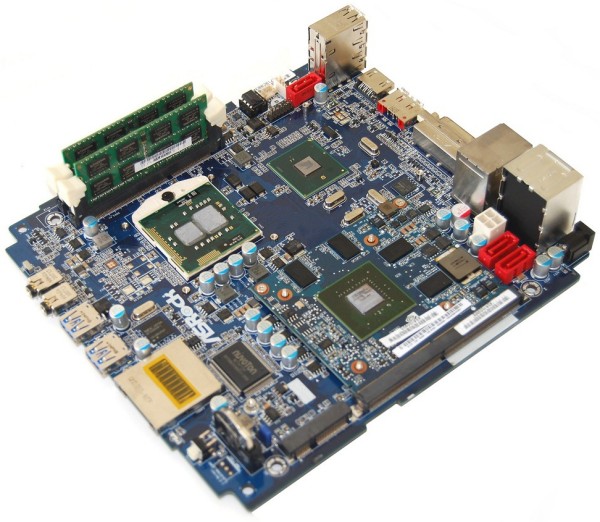Taking Apart the Vision 3D
Much like the exterior, everything was very tidy under the hood. Asrock designed a neat cable system for delivering power and data cables to the optical and hard disk drive. Mounted above the Asrock HM55-MXM motherboard we found a Western Digital Scorpio Black 500GB 7200-RPM hard drive with a 16MB cache valued at ~$75, along with the Lite-On SATA Slim Blu-ray DL-4ETS combo drive.


This drive supports read speeds of 24x CD, 8x DVD, 4x BD, 3x BD-DL, 2x BD‐R SL/DL and write speeds of 8x DVD+/-R, 8x DVD+RW, 6x DVD-RW, 6x DVD+R DL and 24x CD read speeds. The drive features a relatively small 2MB buffer with access times of 250ms Blu-ray, 180ms for DVDs and 180ms for CDs.


At the heart of the Vision 3D is the mobile Intel Core i3 or Core i5 processor. There are a few different versions of the Vision 3D which feature either the Core i3 370M, Core i5 460M or Core i5 560M processors.


The Core i3 version uses the 370M which is clocked at 2.4GHz without Turbo Boost and features two cores (four simultaneous threads with HyperThreading), each with 3MB L3 cache.
The Core i5-460M works at 2.53GHz and boasts two cores (HyperThreading is supported) and the same 3MB L3 cache. However it features Turbo Boost which can boost the frequency of each fore to 2.79GHz when needed.
The Core i5 560M version works at 2.67GHz and features a more aggressive Turbo boost specification while the 3MB L3 cache is still used. So, in essence the Core i3 370M and Core i5 560M are very much alike and with a little manual overclocking the cheaper 370M could actually surpass the 560M.

Moving on we have a pair of DDR3 SO-DIMM slots populated with high quality Kingston DDR3-1333 2GB modules for a total of 4GB. Upgrading the Vision 3D memory will have you doing away with this memory and replacing it with two 4GB modules at a cost of around $140 each should you require to do so.
On the network front the Vision 3D uses the Realtek RTL8111E Gigabit Ethernet controller, along with an Atheros AR9287 wireless-N PCI Express Half Mini Card.

Asrock has also used a Realtek chip for audio, using their tried and true ALC890B 8-channel audio codec with THX TruStudio Pro. The TruStudio Surround technology expands your stereo content into surround sound and the TruStudio Crystalizer technology restores the compressed sound source, letting you hear every detail in riveting surround sound.

The Nuvoton NCT6775F IC has helped Asrock achieve the EuP2.0 standard, which indicates that the total AC power consumption of the system is under 0.5W when turned off.


Most motherboards are getting their USB 3.0 support from the NEC D720200F1 controller and this is the very controller Asrock used in the Vision 3D for the two front panel USB 3.0 ports. Meanwhile, the Logic FL 1000G controller has also been used for a single rear USB 3.0 port. These ports are fully backwards compatible with previous USB standards for greater flexibility.

While Vision 3D comes with a single 2.5" 500GB hard drive a second 2.5" drive can be mounted under the primary. In order to do so, the optical drive and primary hard drive have to be removed from the mounting bracket. Asrock also included a cable that connects from a special power connection on the motherboard to the second hard drive.
This opens the possibility of purchasing a second WD Scorpio Black 500GB hard drive for a terabyte of fast storage. Alternatively an affordable low capacity boot SSD drive would be a nice option here.




The cooling setup is similar to that used in laptops, which is not all that surprising as the Asrock Vision 3D uses mobile Intel processors. The CPU and HM55 chipset are cooled via a large silver aluminum heatsink with a copper base. This heatsink is actively cooled via a tiny 35mm fan, while the Nvidia GeForce GT425M graphics card also shares this airflow using a small array of aluminum fins which are connected to a large copper base. This combination keeps the Vision 3D both quiet and cool.
